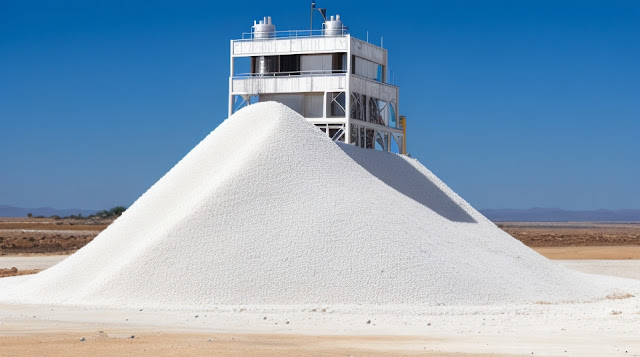Salt analysis for NH4Cl ( ammonium Chloride ) | To detect the presence of one acidic and one basic radical from given inorganic salt .
The blog post focuses on the CBSE Class 12 Chemistry Salt Analysis Practical : To identify and detect the Acidic and Basic radical from the given unknown organic salt. We have included all necessary writing points that of Aim, Materials Required, Physical Observations, Observation Table, Procedure, Chemical Reactions separately for Acidic and Basic Radicals, Result and Precautions.
If you found this information helpful for your Class 12th practical's, kindly share this blog with others. If you have any doubts or questions regarding the content, please feel free to comment below, and we will be glad to assist you. This practical experiment for Class 12 CBSE Chemistry focuses on detecting an acidic and basic radical salt using ammonium chloride , NH4Cl as an example.
If you experience any problem viewing or exploring the pdf or the blog post please instantly contact us at the contact form or you can message any of our official handles. Mistake pointing would be whole heartly accepted .
Link to download the pdf file - ( Link for CHEMISTRY CLASS 12 PRACTICAL - 6 )
_______________________________________________________________________________________________________
Aim - To identify the acidic radical and basic radical from the given unknown organic salt .
Materials Required - Salt , Reagents , Equipment's
Physical Observations -
=> Color Of the Salt : White crystalline
=> Odor of the Salt : Characteristic pungent smell
=> Solubility of the Salt : Soluble in Water
Observation Table -
TABLE 1 : Table to test for basic radical for the organic unknown salt.
| EXPERIMENT | OBSERVATION | INFERENCE |
|---|---|---|
| Salt + NaOH | Pungent Smell ( ammoniacal smell) |
'0' Group Present (may be NH4+) |
| Salt + NaOH + rod dipped in conc.HCl near mouth of tube |
White ppt. appear | NH4+ confirms |
| Salt + Water + Nesslars Reagent | Orange - Brown Reddish color appears |
NH4+ confirms |
TABLE 2: Table to test for Acidic radical for the organic unknown salt.
| EXPERIMENT | OBSERVATION | INFERENCE |
|---|---|---|
| Salt in Test Tube + dil. H2SO4 |
No Required Effect | dil. H2SO4 group is absent |
| Salt in Test Tube + conc. H2SO4 |
Suffocating Fumes | conc. H2SO4 group present (maybe Cl-) |
| Salt + NaOH + rod dipped in conc.HCl near mouth of tube |
White ppt. appear | NH4+ confirms |
| Salt + Water + Nesslars Reagent | Orange - Brown Reddish color appears |
NH4+ confirms |
Chemical Equations - Me upload kar dunga baad me check the drive link above for it.
Result - In the given salt, the acidic radical (anion) is Cl- and the basic radical (cation) is NH4+. Hence the given salt is NH4Cl (Ammonium Chloride).
Precautions - Wash the apparatus before use.
- Add the related reagents carefully.
- Observe the color and the effects carefully.
- Handle the acids carefully.
- Use Protection Equipment's like Glasses and Lab Coats.
Conclusion - Through this experiment, the acidic and basic radicals present in Ammonium chloride (NH4Cl) were successfully detected. The reactions with sodium hydroxide, hydrochloric acid, barium chloride, potassium iodide, sulfuric acid, and calcium hydroxide provided distinct observations, indicating the presence of both acidic and basic radicals in the salt. This experiment helps enhance the understanding of acid-base reactions and their detection in a practical setting, which is crucial for Class 12 CBSE Chemistry students.
Note: If you found this information helpful for your Class 12th practicals, kindly share this blog with others. If you have any doubts or questions regarding the content, please feel free to comment below, and we will be glad to assist you.
